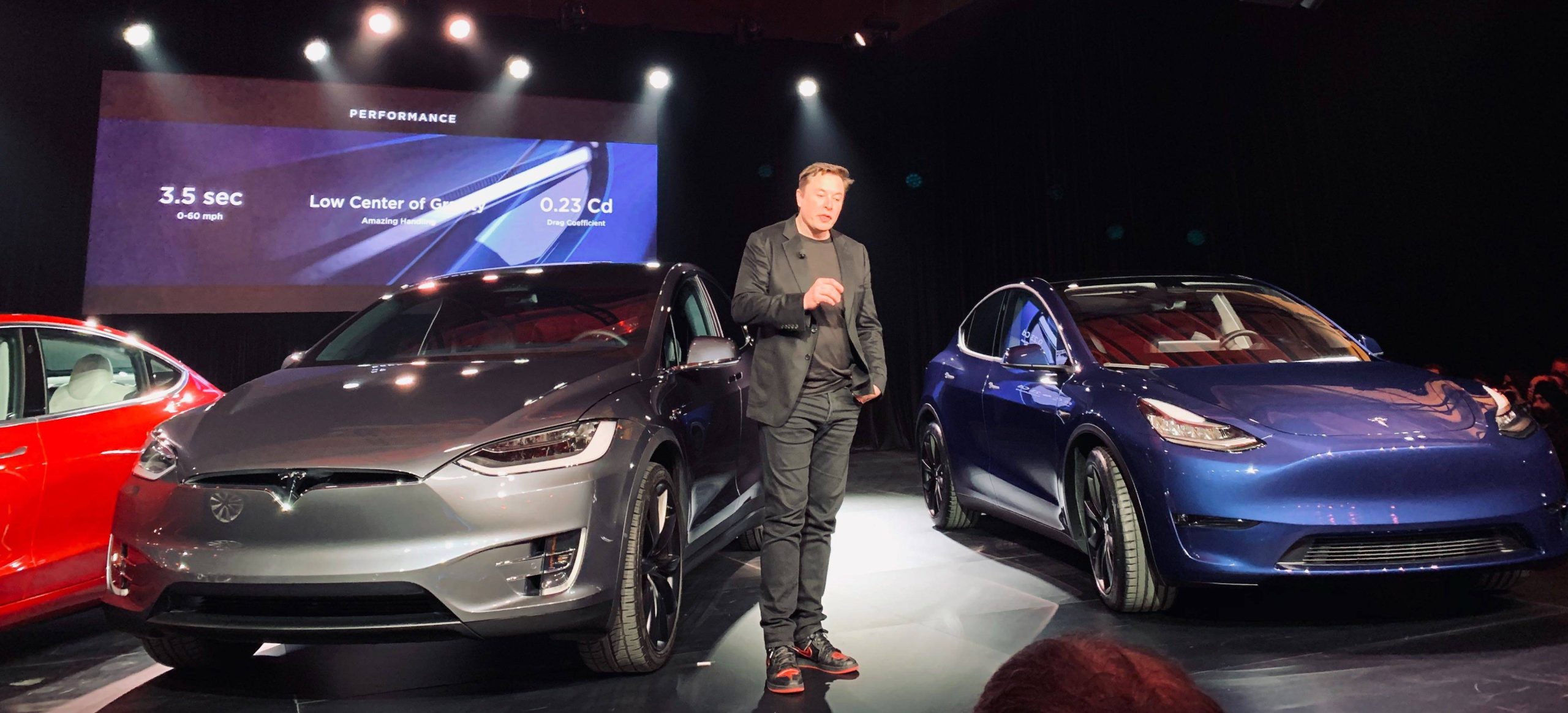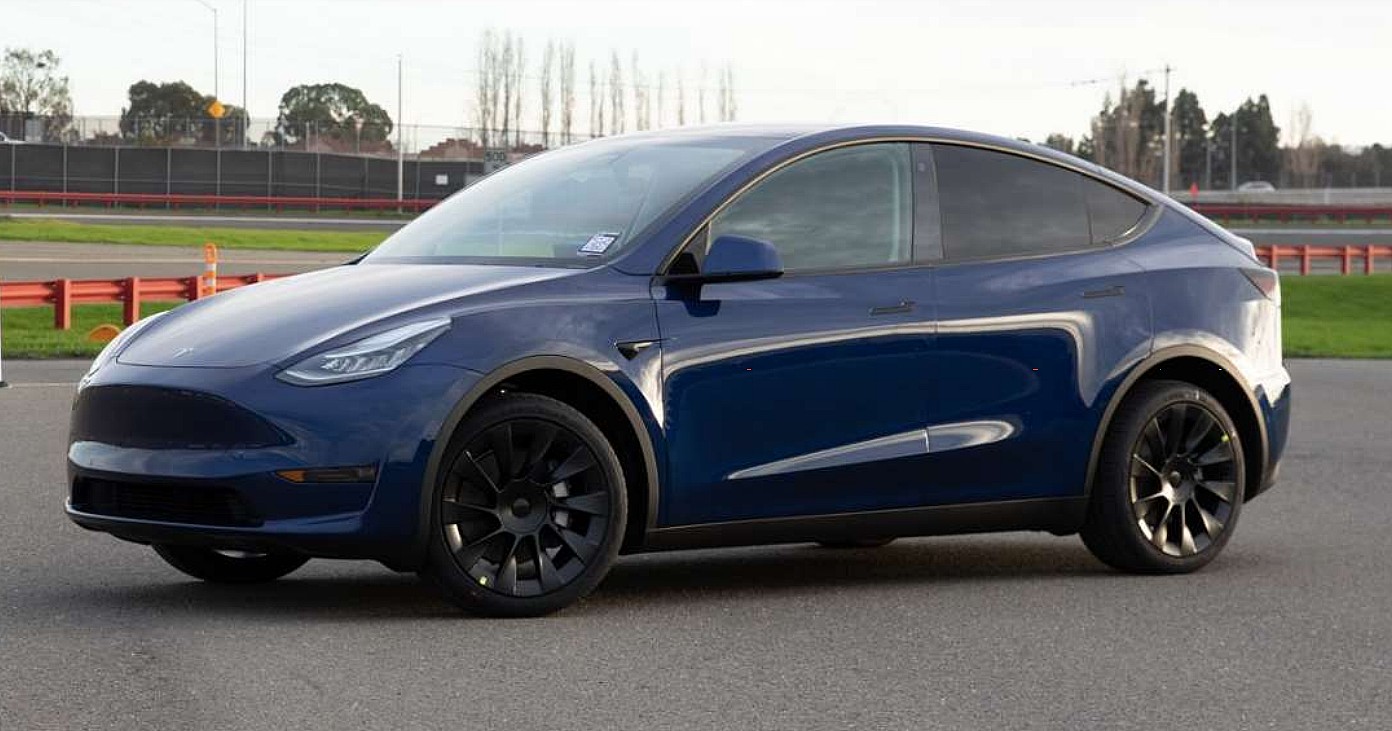

News
Tesla, a stealthy Model Y ramp, and the art of underpromising
There was once a time when it was a legitimate criticism to state that Tesla and its CEO, Elon Musk, are prone to being a bit too optimistic in presenting a grand vision of the future. But since unveiling the Model Y all-electric crossover, it appears that Tesla has entered a new era — one where Elon Musk is developing the art of underpromising and overdelivering. This is a pretty frightening topic for the company’s critics, especially those with financial stakes against Tesla.
Despite all the hype surrounding its release, many, including myself, were quite underwhelmed when the Model Y was unveiled. Being heavily based on the Model 3 sedan, the Y was so similar that TSLA shorts actually accused the electric carmaker of fraud (no surprise there) for allegedly passing off a raised Model 3 as a new vehicle. This is a ridiculous accusation, of course, but it does give an idea about how understated the Model Y and its unveiling really was.
But the Y seems destined to disappoint the anti-Tesla crowd without remorse.

During its unveiling, Elon Musk stated that deliveries of the vehicle are expected to start in Fall 2020, a conservative date that was moved up to Summer 2020 in the company’s Q3 2019 Update Letter. During the fourth quarter earnings call, Tesla CFO Zachary Kirkhorn announced that first deliveries of the Model Y will actually be happening sometime later this quarter. That’s far earlier than what even most TSLA bulls have predicted.
This is also a very different strategy than what Tesla adopted for the Model 3. When the Model 3 kicked off its mass production with its first customer handovers, Elon Musk announced a hyper-aggressive delivery timeframe that ended up being delayed by six months. The company suffered as a result, from its share price in the markets to the fatigue of Tesla employees working to bring the Model 3 to its target production levels. With the Model Y, Tesla seems to have started with a conservative timeline that it knew it could easily beat, and it worked its way up from there.
Based on the updates to the Model Y’s delivery timeframes, it appears that Tesla may only be adjusting its targets once it knows it can actually meet them. This shows a degree of maturity on Tesla’s part that has not really been seen in the past, and it is something that should frighten those who actively bet against the company.

This shows that Tesla is learning from its mistakes, and it is taking the lessons from the past and adapting it for the future. During the early days of the original Roadster and the Model S, it was imperative for the company to promote the vehicle’s maximum range potential to make them competitive against their petrol-powered rivals. Today, Tesla can actually afford to lowball its range. CARB filings for the Model Y initially suggested a range of over 300 miles for the vehicle’s performance variant, and this was confirmed in recent updates to Tesla’s order page. When the Model Y was unveiled, its Performance trim was listed with a range of 280. Now, the vehicle has a range of 315 miles per charge.
What is rather interesting is that Tesla is doing this while its competitors are still at a point where they are overpromising on their vehicles. Just look at the range portion of the Ford Mustang Mach-E’s presentation: the words “target range” are abounding. That means that Ford thinks it could reach the range it announced for the vehicle, but it is still working on it. It’s a strategy that’s a lot more cautious than Porsche’s with its early announcements of a 300-mile Taycan, but perhaps the American automaker learned its lesson from the Turbo S’ 192-mile range EPA rating.
It takes an ambitious company to aim for hyper-aggressive targets that have a good chance of not being met, but it takes a mature company to publicly announce goals that it knows it can beat. Tesla appears to be in the latter camp with the Model Y, and that’s really good. Apple’s legendary CEO, Steve Jobs, made his mark in the tech sector with an underpromise and overdeliver strategy, and it ultimately helped the tech giant build enough momentum to make it the juggernaut that it is today. There’s no reason why Tesla and Elon Musk cannot do the same.

Elon Musk
Elon Musk and Tesla AI Director share insights after empty driver seat Robotaxi rides
The executives’ unoccupied tests hint at the rapid progress of Tesla’s unsupervised Robotaxi efforts.

Tesla CEO Elon Musk and AI Director Ashok Elluswamy celebrated Christmas Eve by sharing personal experiences with Robotaxi vehicles that had no safety monitor or occupant in the driver’s seat. Musk described the system’s “perfect driving” around Austin, while Elluswamy posted video from the back seat, calling it “an amazing experience.”
The executives’ unoccupied tests hint at the rapid progress of Tesla’s unsupervised Robotaxi efforts.
Elon and Ashok’s firsthand Robotaxi insights
Prior to Musk and the Tesla AI Director’s posts, sightings of unmanned Teslas navigating public roads were widely shared on social media. One such vehicle was spotted in Austin, Texas, which Elon Musk acknowleged by stating that “Testing is underway with no occupants in the car.”
Based on his Christmas Eve post, Musk seemed to have tested an unmanned Tesla himself. “A Tesla with no safety monitor in the car and me sitting in the passenger seat took me all around Austin on Sunday with perfect driving,” Musk wrote in his post.
Elluswamy responded with a 2-minute video showing himself in the rear of an unmanned Tesla. The video featured the vehicle’s empty front seats, as well as its smooth handling through real-world traffic. He captioned his video with the words, “It’s an amazing experience!”
Towards Unsupervised operations
During an xAI Hackathon earlier this month, Elon Musk mentioned that Tesla owed be removing Safety Monitors from its Robotaxis in Austin in just three weeks. “Unsupervised is pretty much solved at this point. So there will be Tesla Robotaxis operating in Austin with no one in them. Not even anyone in the passenger seat in about three weeks,” he said. Musk echoed similar estimates at the 2025 Annual Shareholder Meeting and the Q3 2025 earnings call.
Considering the insights that were posted Musk and Elluswamy, it does appear that Tesla is working hard towards operating its Robotaxis with no safety monitors. This is quite impressive considering that the service was launched just earlier this year.
Elon Musk
Starlink passes 9 million active customers just weeks after hitting 8 million
The milestone highlights the accelerating growth of Starlink, which has now been adding over 20,000 new users per day.

SpaceX’s Starlink satellite internet service has continued its rapid global expansion, surpassing 9 million active customers just weeks after crossing the 8 million mark.
The milestone highlights the accelerating growth of Starlink, which has now been adding over 20,000 new users per day.
9 million customers
In a post on X, SpaceX stated that Starlink now serves over 9 million active users across 155 countries, territories, and markets. The company reached 8 million customers in early November, meaning it added roughly 1 million subscribers in under seven weeks, or about 21,275 new users on average per day.
“Starlink is connecting more than 9M active customers with high-speed internet across 155 countries, territories, and many other markets,” Starlink wrote in a post on its official X account. SpaceX President Gwynne Shotwell also celebrated the milestone on X. “A huge thank you to all of our customers and congrats to the Starlink team for such an incredible product,” she wrote.
That growth rate reflects both rising demand for broadband in underserved regions and Starlink’s expanding satellite constellation, which now includes more than 9,000 low-Earth-orbit satellites designed to deliver high-speed, low-latency internet worldwide.
Starlink’s momentum
Starlink’s momentum has been building up. SpaceX reported 4.6 million Starlink customers in December 2024, followed by 7 million by August 2025, and 8 million customers in November. Independent data also suggests Starlink usage is rising sharply, with Cloudflare reporting that global web traffic from Starlink users more than doubled in 2025, as noted in an Insider report.
Starlink’s momentum is increasingly tied to SpaceX’s broader financial outlook. Elon Musk has said the satellite network is “by far” the company’s largest revenue driver, and reports suggest SpaceX may be positioning itself for an initial public offering as soon as next year, with valuations estimated as high as $1.5 trillion. Musk has also suggested in the past that Starlink could have its own IPO in the future.
News
NVIDIA Director of Robotics: Tesla FSD v14 is the first AI to pass the “Physical Turing Test”
After testing FSD v14, Fan stated that his experience with FSD felt magical at first, but it soon started to feel like a routine.

NVIDIA Director of Robotics Jim Fan has praised Tesla’s Full Self-Driving (Supervised) v14 as the first AI to pass what he described as a “Physical Turing Test.”
After testing FSD v14, Fan stated that his experience with FSD felt magical at first, but it soon started to feel like a routine. And just like smartphones today, removing it now would “actively hurt.”
Jim Fan’s hands-on FSD v14 impressions
Fan, a leading researcher in embodied AI who is currently solving Physical AI at NVIDIA and spearheading the company’s Project GR00T initiative, noted that he actually was late to the Tesla game. He was, however, one of the first to try out FSD v14.
“I was very late to own a Tesla but among the earliest to try out FSD v14. It’s perhaps the first time I experience an AI that passes the Physical Turing Test: after a long day at work, you press a button, lay back, and couldn’t tell if a neural net or a human drove you home,” Fan wrote in a post on X.
Fan added: “Despite knowing exactly how robot learning works, I still find it magical watching the steering wheel turn by itself. First it feels surreal, next it becomes routine. Then, like the smartphone, taking it away actively hurts. This is how humanity gets rewired and glued to god-like technologies.”
The Physical Turing Test
The original Turing Test was conceived by Alan Turing in 1950, and it was aimed at determining if a machine could exhibit behavior that is equivalent to or indistinguishable from a human. By focusing on text-based conversations, the original Turing Test set a high bar for natural language processing and machine learning.
This test has been passed by today’s large language models. However, the capability to converse in a humanlike manner is a completely different challenge from performing real-world problem-solving or physical interactions. Thus, Fan introduced the Physical Turing Test, which challenges AI systems to demonstrate intelligence through physical actions.
Based on Fan’s comments, Tesla has demonstrated these intelligent physical actions with FSD v14. Elon Musk agreed with the NVIDIA executive, stating in a post on X that with FSD v14, “you can sense the sentience maturing.” Musk also praised Tesla AI, calling it the best “real-world AI” today.








